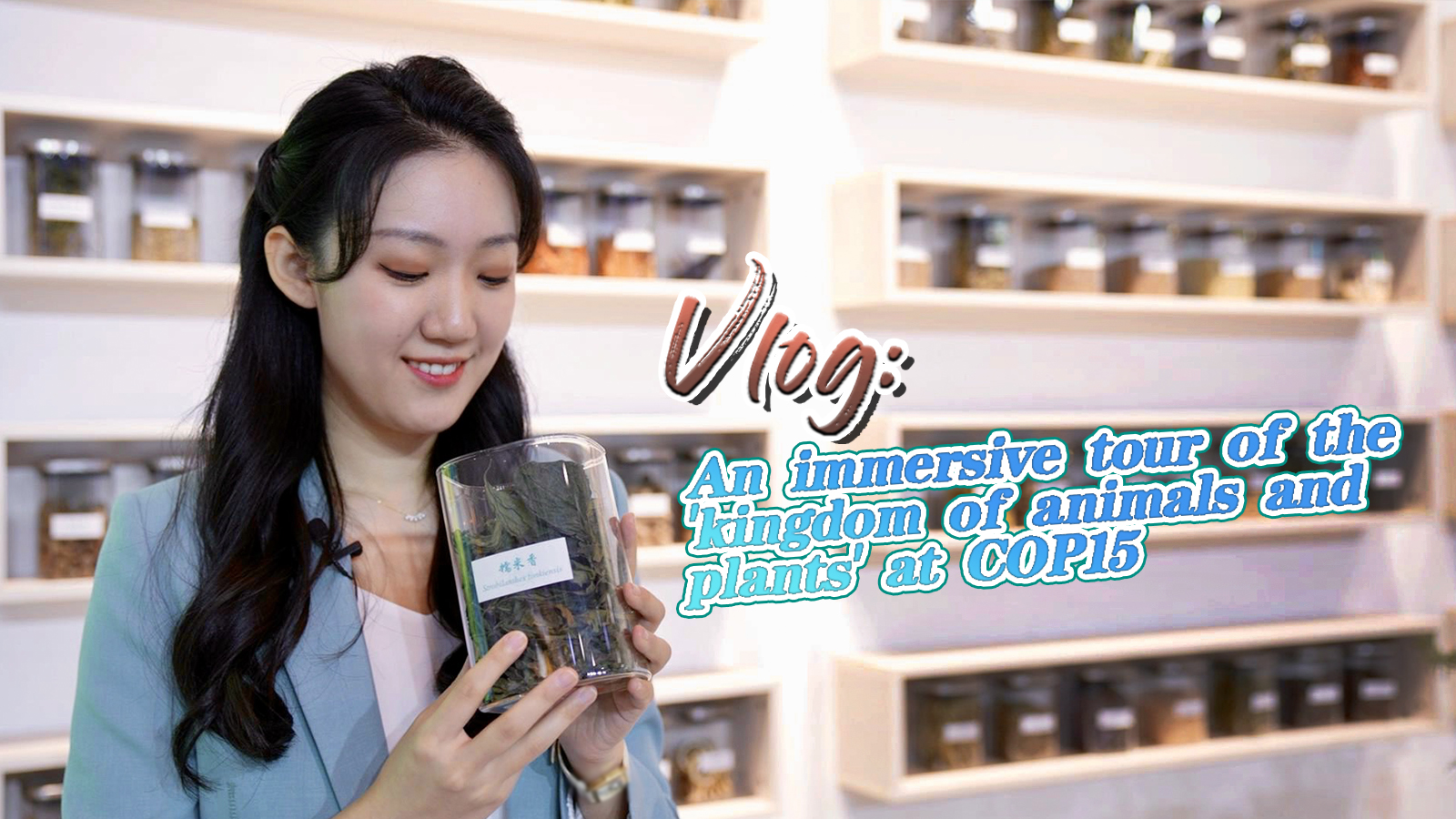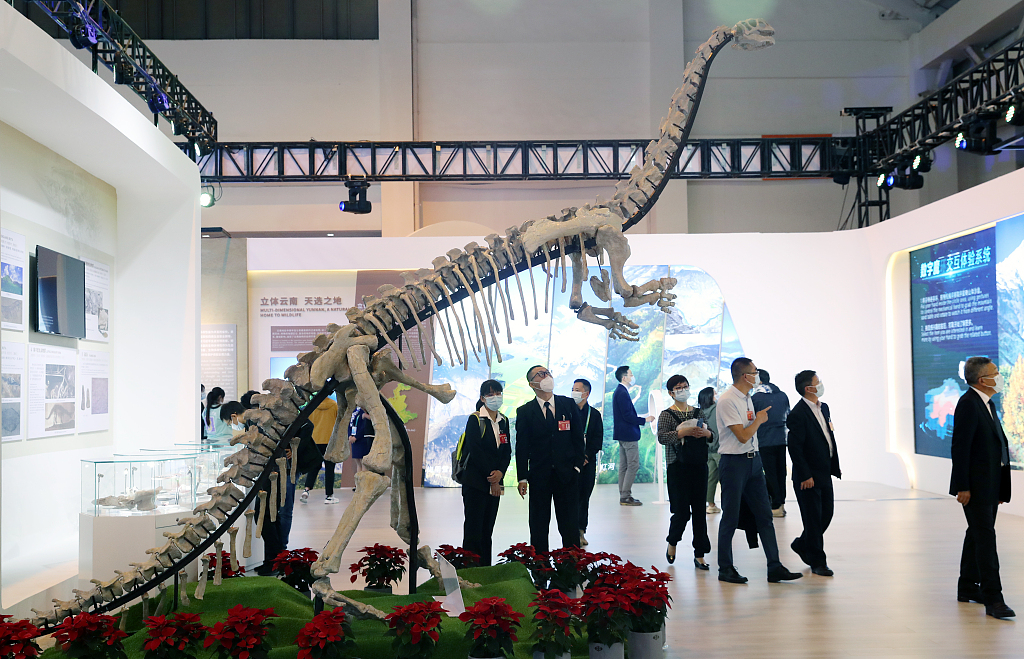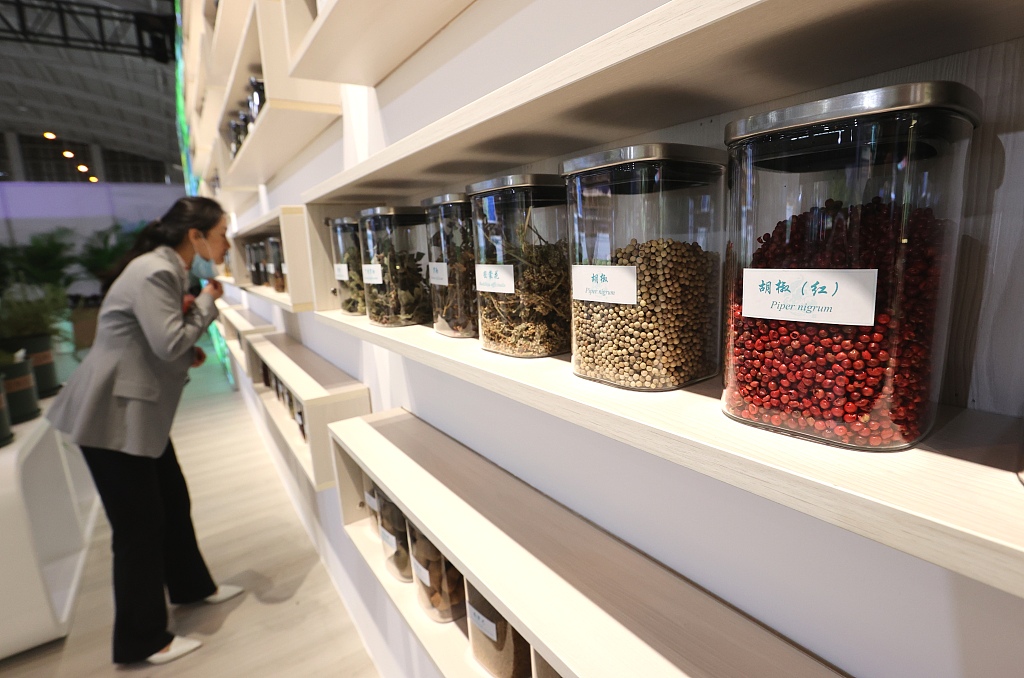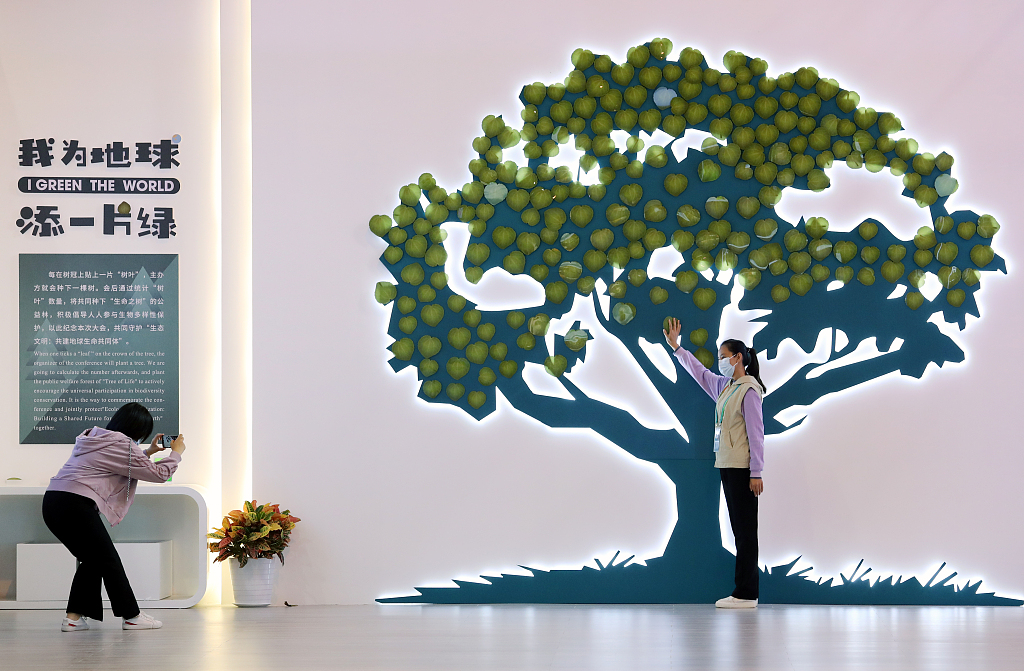03:12

Southwest China's Yunnan Province, also known as the "kingdom of animals and plants," ranks first in terms of biodiversity in China, making it the perfect choice for the 15th meeting of the Conference of the Parties to the Convention on Biological Diversity (COP15).
A special exhibition about the province's practices and achievements in biodiversity protection is definitely one of the highlights at the COP15.
With more than 150 exhibits and 700 pictures, the exhibition showcases the richness and uniqueness of Yunnan's biodiversity.

The skeletal model of Lufengosaurus displayed at a special exhibition about the province's practices and achievements in biodiversity protection, in Kunming, southwest China's Yunnan Province. /CFP
The skeletal model of Lufengosaurus displayed at a special exhibition about the province's practices and achievements in biodiversity protection, in Kunming, southwest China's Yunnan Province. /CFP
A skeletal model of a dinosaur attracts the most attention. Its creation is based on fossilized remains unearthed recently in Yunnan's Lufeng County.
"The dinosaur is called the Lufengosaurus. It could be dated back to 200 million years ago," Lv Xuemei, the exhibition guide, told CGTN. "It's the ancestor of other dinosaur species.
"The scientists recently used three-dimensional scanning and printing technology to produce this model. It's the first in China."

Visitors can take a jar of spice on the wall and smell the scents of Yunnan. /CFP
Visitors can take a jar of spice on the wall and smell the scents of Yunnan. /CFP
Yunnan is reputed as the "kingdom of spices" with over 400 kinds of spices.
"We selected 150 to exhibit here... and it's also a demonstration of the biodiversity," Lv said in introducing the "wall of spices."
Visitors can sniff jars of spices on the wall and get a hint of the scents of Yunnan.
The exhibition also features many interactive experience areas. Through technologies such as AR, motion capture and real-time transmission, visitors can learn about the province's biodiversity in a fun and immersive way.

Visitors take pictures at the "Tree of Life." /CFP
Visitors take pictures at the "Tree of Life." /CFP
On the way out, they can put a leaf on the "Tree of Life." The organizers will count the leaves after the conclusion of COP15 and plant the same number of trees. In this way, visitors can actually be a part of biodiversity protection.
Reporter: Guo Meiping
Videographer: Zeng Hongen
Video editor: Zeng Hongen
Cover image: Yu Peng

